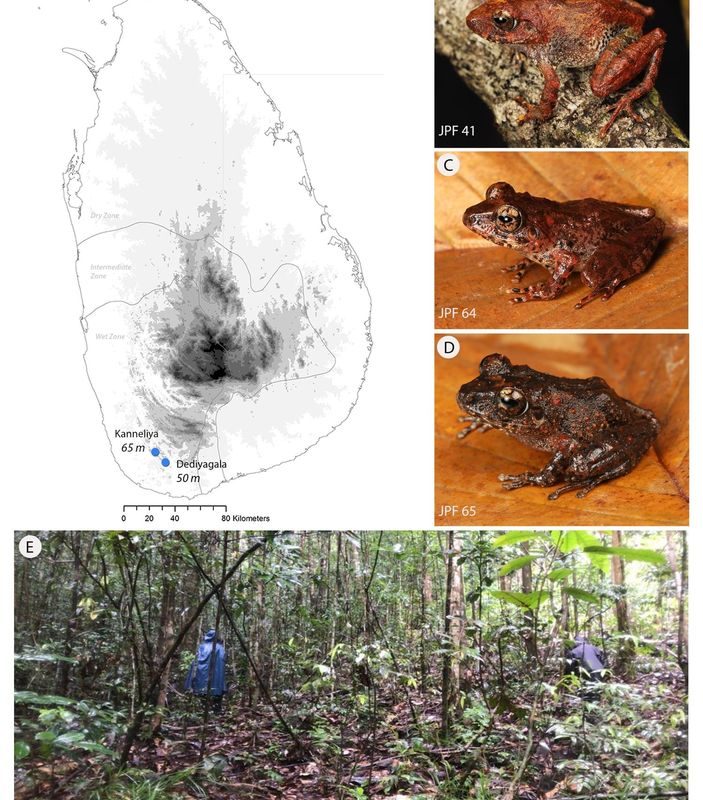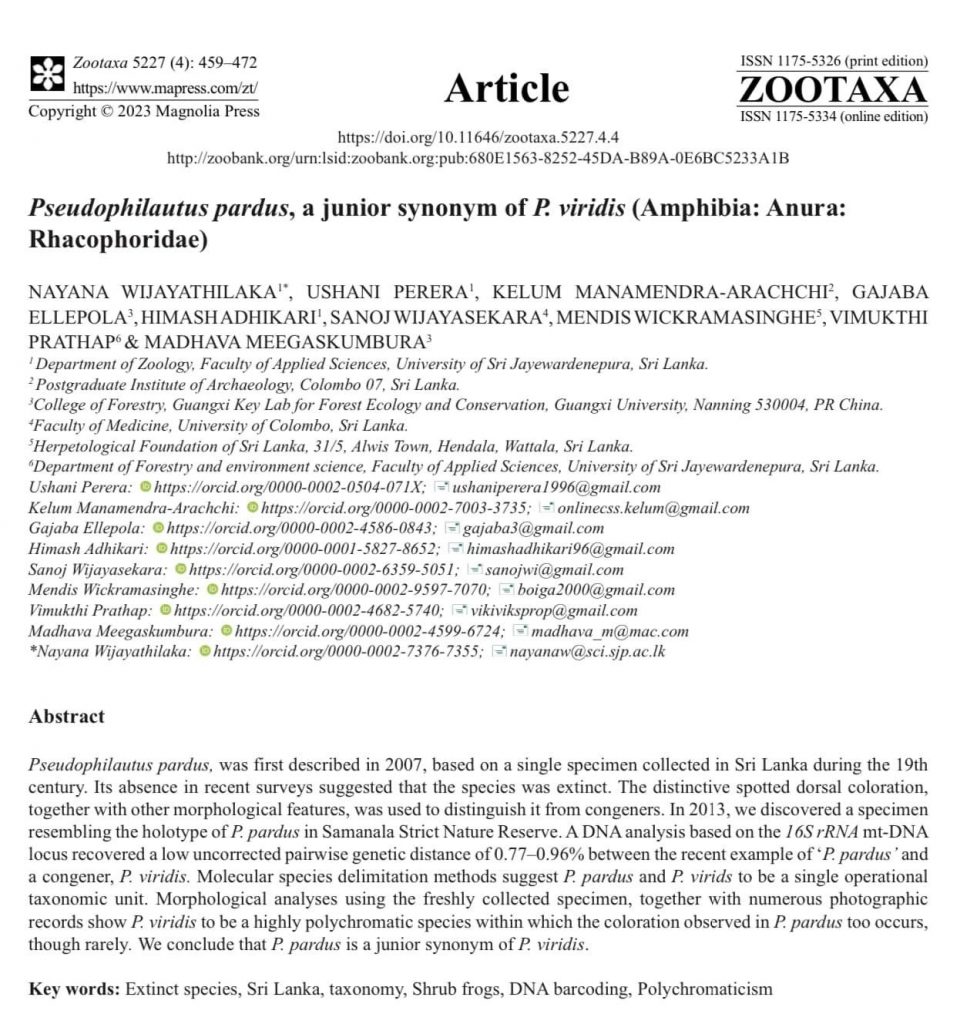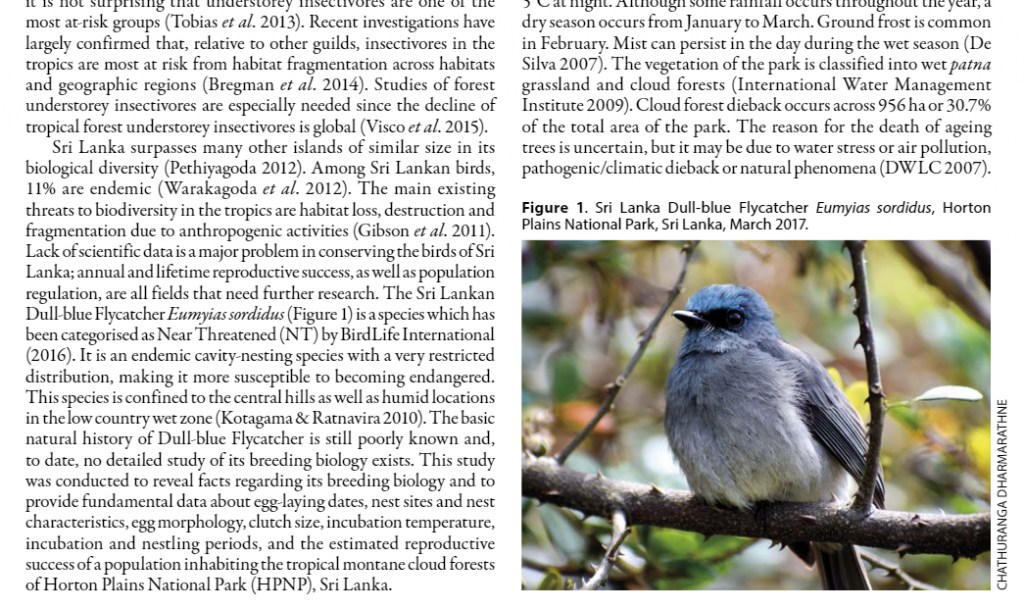SHASHIKA ABEYSEKARA; HELANI SAMARASINGHE; KELUM MANAMENDRA-ARACHCHI; HIMASH ADHIKARI; SONALI PREMARATHNE; CHAMPIKA BANDARA; USHANI PERERA; NAYANA WIJAYATHILAKA
published in Zootaxa
Pseudophilautus conniffae from Lowland wet zone of Sri Lanka, was described as a new species in 2019. The validity of the new species was questionable and was often challenged as it shares strong morphological resemblance with P. limbus. Moreover, the phylogenetic placement of P. conniffae was unknown as no molecular data was available until now. Here, we generated 16S DNA sequences and re-examined the external morphological characters to assess its taxonomic distinctiveness. Pseudophilautus conniffae was recovered as being close to P. limbus with strong posterior probability and bootstrap support. The uncorrected pairwise genetic distance between P. conniffae and P. limbus was negligible, being less than 0.3% for the 16S gene fragment. Further two molecular species delimitation methods, ABGD and mPTP suggested that P. conniffae and P. limbus are a single operational taxonomic unit. The Principal Component Analysis of the morphometric characters also resulted in overlapping clusters. These results suggest that the newly described P. conniffae is not a valid species and we conclude that P. conniffae as a junior synonym of P. limbus.






 Authors: Chathuranga Dharmarathne and Dharshani Mahaulpatha
Authors: Chathuranga Dharmarathne and Dharshani Mahaulpatha